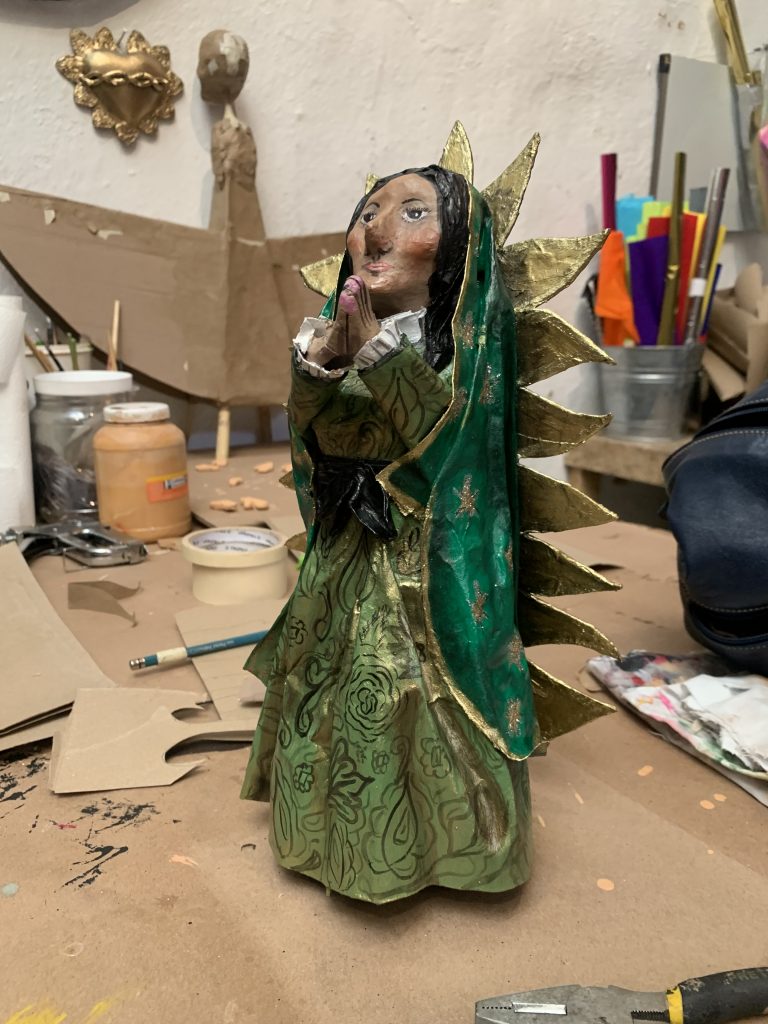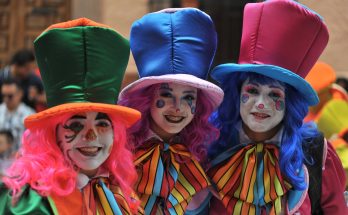By Carola Rico
The artisanry sector was hard hit by the pandemic. Before Covid, it was already struggling with promoting its products, but with the pandemic the situation became critical, as Mexican artisans were already facing the challenge of modernizing their sales methods. The alternatives they have undertaken to promote their work is an important step, since that income is often the only resource for them and many families. This applies especially to places where tourism is an important part of the economy, such as in San Miguel de Allende.
Popular art is considered an expression of the traditions and customs of our native peoples. These crafts are a living heritage; they are passed on from generation to generation, and their production relies on local resources. These products also carry a heavy symbolic load; conservation of this invaluable art is important. The pandemic jeopardized the situation of many who dedicate themselves to their art; they were affected by the drop in sales, fewer tourists, and the cancellation of popular art exhibitions. The pandemic affected all artisans of Mexico.
This week we spoke with Hermes Arroyo Guerrero, a SMA-based artisan famous worldwide for his mojigangas—the giant paper mache figures we see on our streets. He also makes masks and religious figures for traditional and religious events in the Catholic Church.
Arroyo is a teacher by profession who specializes in special education. He teaches art to young people with mental disabilities, and teaches them crafts they can earn a living from. He is one of 12 brothers, and calls himself a man of faith. One of his philosophies is: “Do what you have to do with what you have.” He likes new experiences, learning, and doing. If he doesn’t know something, he is not afraid to ask, and that has taken him far.
Arroyo studied at a nuns’ school that emphasized art and science. At the age of seven, the school selected him to make an altar of the Virgin of Guadalupe, a representation of the birth of Jesus, and Easter decorations. His father was a workman who had a coworker named Genaro Almanza, a great sculptor from SMA. Almanza’s son, Toño, was Arroyo’s friend. One day, the nuns at their school asked Toño and Arroyo to create a nativity scene. They went to Hermes’ father’s (Arroyo called him godfather) and asked him for images of the saints. Almanza took them to his workshop, and Arroyo was amazed to find an entire art installation. Seeing these traditional statues throughout the house, and the very particular smell of glue and paste, is a very strong memory for him.
Almanza sent them to get brown paper, the kind used by masons, or the paper from tortilla bags for their raw material. Arroyo remembers that one of the first things he worked on with his godfather were some masks, about which Amanaza told a lot of stories. “My godfather was a walking book; he was the third generation of religious sculptors,” said Arroyo.
Toño is an excellent wood carver as well as a great human being, Arroyo says. He considers it a great fortune to have lived with the Almanza family. He was like an adopted son, and they were very dedicated to God.
When Arroyo was 18, he went to Monterrey for a job. It was there that he began to investigate contemporary art. When he returned to SMA, he continued to visit his godfather, from whom he collected and absorbed wisdom and a taste for antiques. At the same time, he continued his studies in special education.
As a santero—someone who creates religious statues—and as a sculptor, Arroyo began to work with paper and cardboard. He studied and developed his craft with Leopoldo Estrada—recognized for the elaboration of the mojigangas—. Later, he collaborated with Cesar Arias, director of El Charco del Ingenio Botanical Garden as an artist and in education. There, he learned about botany, life, and the environment, and also worked with children and with some communities. Later, he spent time in Mexico City making sets for plays.
When Arroyo returned to SMA, he began to work with mojigangas and learned that these dolls were part of a very old tradition and history, as they came from Europe. In Brazil, Arroyo saw a parade of mojigangas, and exclaimed, “I had never seen them, yet they were so similar to what I did, and I connected with them. How did all that come about? From imagination. There are others who also think of giant things.”
Arroyo also remembers how an art teacher once read his palm and told him, “Around you are very big people. There is you and all those are giant beings.” Arroyo immediately thought, “They are my mojigangas, it is my life.” The teacher continued, “That is the path you are going to be on all your life.”
Arroyo has made at least 1,000 mojigangas. In addition to making them, he teaches and directs the work of these giant figures. In the traditional festivals of SMA, mojigangas have always been present. Small towns like Comonfort, Chiapas, and Puebla also have strong traditions whereby mojigangas are in processions behind the Blessed Sacrament and the Host. Currently, Arroyo is working on one that will represent life in Mexico—everything good and bad, life and death.
Originally, mojigangas were paraded at town festivals and during traditional religious ceremonies. Later, renting these huge dolls to pre-wedding and wedding parties became a money-making business. Arroyo began to decorate them with flowers and with crazy items, always improving them. He later began to make representations of the bride and groom, which are very popular. Lately he has made pets, such as dogs and cats, that dance at parties. Arroyo regularly collaborates in town festivals, such as those in San Isidro, Santa Cruz, and San Miguel el Viejo. Collaborating in the culture of different town brings him great satisfaction.
Arroyo traveled with his mojigangas to the Vatican four years ago, and danced with them on Rome’s Via della Conciliazione. He described these mojigangas as brown, indigenous people, and said the public’s reaction was incredible. This trip was the result of a project in Querétaro, where he had competed against several papier mache artists. He was selected because of the beauty of his work and the Mexican iconography that they express.
Regarding the post pandemic economic recovery of artisans, Arroyo says that culture was hit hard. However, he never stopped creating in his workshop, and did not stop paying his employees. He lived through the pandemic inside his house, doing a full generation’s worth of work. “We stopped selling, but never working,” he noted. He appreciated that the state government helped support them, and that he had some chambitas—small side jobs. Also during the pandemic, SMA’s Department of Culture gave him some work, especially valuable for his employees. In the most difficult moments of the pandemic, Arroyo was always firm that he wanted to continue living the same way, and refused to close his workshop or rent his house, an old one on calle San Francisco that had belonged to his parents. “It was hard, but I used my piggy bank, and that kept me going,” he said.
Currently Arroyo has interesting projects with a new hotel that will open shortly. Once open, he plans on collaborating with those who stay there on art and culture.
About other artisans in the city, Arroyo says that some do not know how to promote themselves. Help is necessary from the local government to publicize local artisans and their work, to support and connect them with each other, and to help them move forward. As final thought Arroyo commented, “The pandemic hit, but it gave me the opportunity to reinvent myself and the know-how to move forward.”





